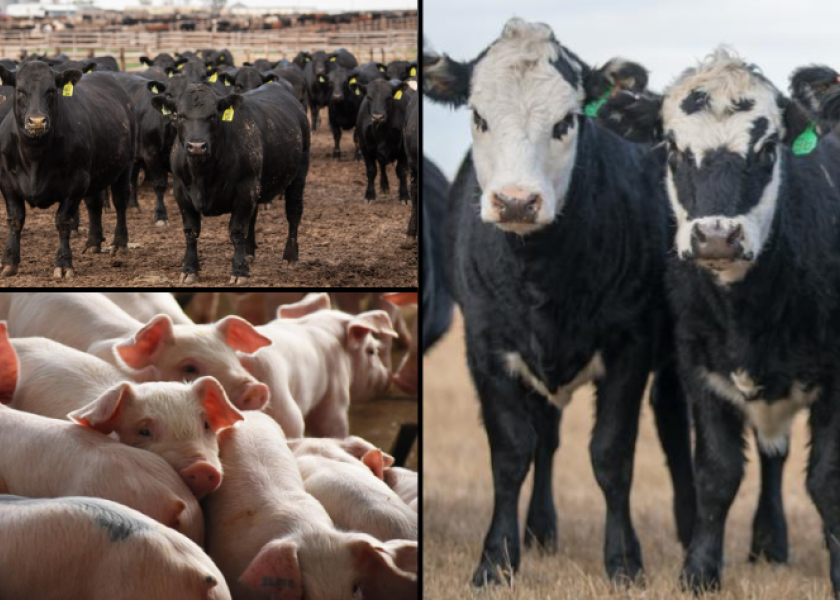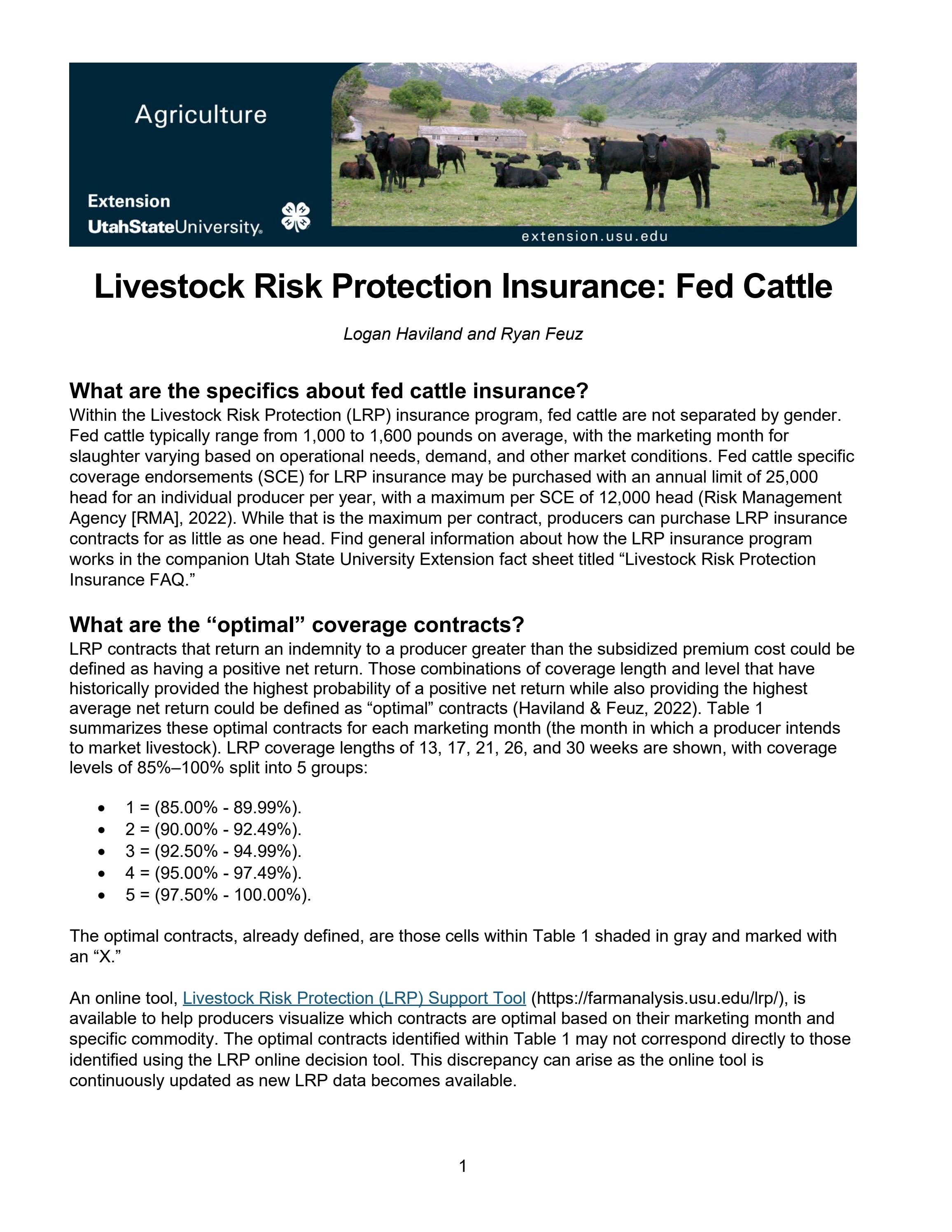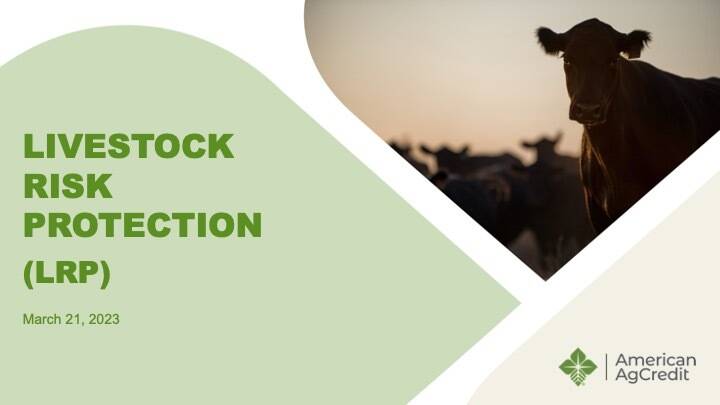Proactive Defense: Bagley Risk Management Techniques
Wiki Article
Understanding Livestock Risk Protection (LRP) Insurance: A Comprehensive Overview
Browsing the world of livestock risk security (LRP) insurance can be an intricate endeavor for many in the farming market. From just how LRP insurance functions to the various protection options offered, there is much to discover in this extensive overview that can possibly form the method animals producers approach risk management in their companies.

Just How LRP Insurance Coverage Works
Sometimes, comprehending the technicians of Animals Threat Defense (LRP) insurance can be complex, but breaking down how it works can supply clearness for farmers and herdsmans. LRP insurance policy is a threat monitoring device made to protect animals manufacturers versus unforeseen cost declines. It's important to note that LRP insurance is not a revenue guarantee; rather, it concentrates exclusively on cost danger protection.Eligibility and Insurance Coverage Options

When it pertains to insurance coverage alternatives, LRP insurance uses manufacturers the flexibility to choose the insurance coverage degree, protection duration, and recommendations that ideal match their risk administration needs. Protection degrees commonly range from 70% to 100% of the expected ending worth of the insured animals. Manufacturers can also pick protection periods that line up with their production cycle, whether they are insuring feeder cattle, fed cattle, swine, or lamb. Endorsements such as cost threat defense can further customize coverage to safeguard against unfavorable market changes. By comprehending the qualification requirements and protection alternatives readily available, animals manufacturers can make educated choices to handle risk successfully.
Benefits And Drawbacks of LRP Insurance
When assessing Livestock Danger Security (LRP) insurance coverage, it is essential for animals producers to weigh the drawbacks and benefits intrinsic in this risk monitoring tool.
One of the primary benefits of LRP insurance coverage is its ability to provide protection versus a decrease in animals prices. Additionally, LRP insurance provides a level of flexibility, enabling manufacturers to personalize protection levels and policy periods to match their details demands.
One restriction of LRP insurance policy is that it does not secure against all kinds of risks, such as condition outbreaks or all-natural catastrophes. It is essential for manufacturers to very carefully examine their specific risk direct exposure and financial scenario to identify if LRP insurance policy is the best threat administration device for their operation.
Comprehending LRP Insurance Premiums

Tips for Making The Most Of LRP Benefits
Maximizing the advantages of Livestock Threat Defense (LRP) insurance coverage requires strategic preparation and proactive danger administration - Bagley Risk Management. To maximize your LRP protection, think about the adhering Web Site to ideas:Frequently Examine Market Conditions: Stay educated concerning market fads and cost variations in the livestock sector. By keeping track of these variables, you can make educated decisions regarding when to purchase LRP coverage to secure versus possible losses.
Set Realistic Protection Levels: When picking protection degrees, consider your production expenses, market price of livestock, and prospective dangers - Bagley Risk Management. Establishing sensible insurance coverage levels ensures that you are appropriately shielded without overpaying for unnecessary insurance coverage
Expand Your Insurance Coverage: As opposed to relying solely on LRP insurance coverage, take into consideration diversifying your danger administration techniques. Combining LRP with other threat monitoring devices such as futures agreements or choices can give extensive protection against market unpredictabilities.
Testimonial and Readjust Insurance Coverage Routinely: As market conditions alter, regularly evaluate your LRP protection to ensure it straightens with your current threat exposure. Adjusting coverage levels and timing of purchases can aid maximize your danger protection technique. By complying with these tips, you can make the most of the advantages of LRP insurance coverage and guard your livestock operation versus unpredicted threats.
Conclusion
To conclude, livestock risk protection (LRP) insurance policy is a valuable tool for farmers to take care of the financial risks connected with their animals procedures. check out this site By recognizing how LRP functions, eligibility and insurance coverage options, in addition to the advantages and disadvantages of this insurance, farmers can make informed choices to protect their incomes. By very carefully considering LRP premiums and executing strategies to take full advantage of advantages, farmers can alleviate potential losses and guarantee the sustainability of their procedures.
Livestock producers interested in acquiring Livestock Danger Security (LRP) insurance can check out a variety of qualification standards and coverage options customized to their specific livestock procedures.When it comes to insurance coverage choices, LRP insurance policy uses manufacturers the flexibility to pick the protection level, insurance coverage duration, and recommendations that best match their threat management requirements.To grasp the details of Livestock Danger Defense visit the site (LRP) insurance completely, understanding the factors influencing LRP insurance premiums is crucial. LRP insurance policy premiums are figured out by various components, consisting of the insurance coverage degree chosen, the anticipated rate of animals at the end of the insurance coverage period, the type of animals being insured, and the size of the insurance coverage period.Review and Readjust Protection Consistently: As market conditions change, occasionally examine your LRP protection to guarantee it lines up with your current threat exposure.
Report this wiki page